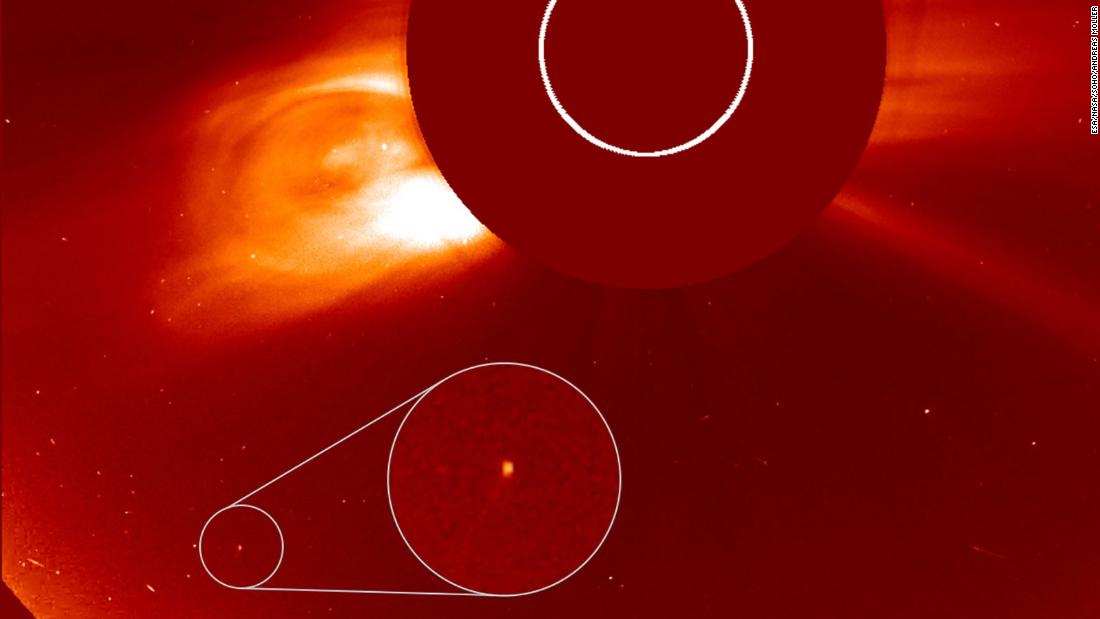
He is participating in the NASA-funded Sungrazer project – a citizen science project that invites anyone to look for new comets in images from the European Space Agency and NASA or SOHO Solar and Heliosphere Observatory.
The comet, called C / 2020 X3 (SOHO), is known as the Kreutz sungrazer, NASA said. This family of comets comes from a large parent comet that split into smaller fragments well over a thousand years ago. Sungrazers continue to orbit the sun today.
Boonplod knew the eclipse was coming, and he was eager to see if his new discovery of the comet could appear in the sun’s outer atmosphere.
A satellite image of the sun, colored in red, shows a flicker of bright light orbiting the Sun. At the time of the eclipse, the comet was traveling at about 450,000 miles per hour, about 2.7 million miles from the sun’s surface, NASA said.
The comet was about 15 meters in diameter – about the length of a semi-truck, NASA said. It then disintegrated into dust particles due to intense solar radiation, a few hours before it reached its closest point to the sun.
Sungrazer Kreutz comets are most commonly found in SOHO images. The space observer’s camera works by mimicking total solar eclipses: a solid disk blocks the blinding sunlight anyway, revealing weaker features of its outer atmosphere and other celestial objects, such as comets.
So far, 4,108 comets have been discovered in SOHO images, with the 3,524th Kreutz sungrazer spotted, NASA said.
As far as is known, no comets have ever been seen to hit the solar surface or the photosphere, the European Space Agency said.
Kreutz sungrazers reach about 31,000 miles (50,000 kilometers) of surface, passing only through the lower regions of the solar atmosphere (corona). Most usually evaporate in the hot solar atmosphere.